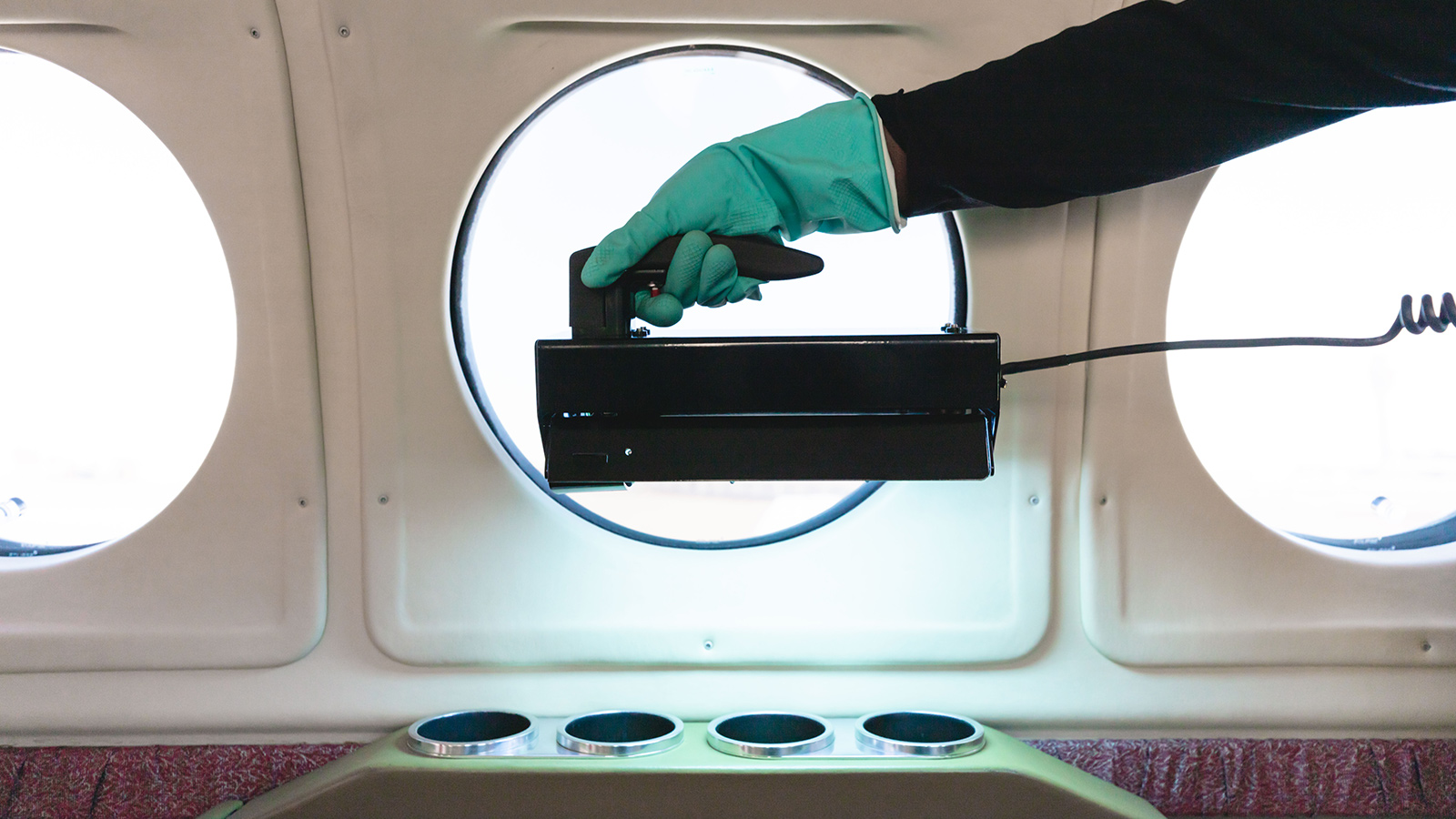Stay Up to Date
Submit your email address to receive the latest industry and Aerospace America news.
Company extends technology to smaller planes
The air travel industry is predicting that demand will return once the coronavirus pandemic subsides, but the rigorous cleaning of planes between flights is likely here to stay. So Honeywell Aerospace has designed a hand-held version of its ultraviolet light cleaner and begun a marketing push to business jet and general aviation owners and operators.
The Arizona-based company on Tuesday announced it is taking orders for the UV Treatment Wand, its second product for sanitizing aircraft surfaces via UVC, or ultraviolet light-c, light. With wavelengths between 200 and 280 nanometers, UVC rays are energetic enough to destroy the genetic material of pathogens, including the SARS-CoV-2 virus that causes covid-19. When Boston University researchers last year placed plastic dishes coated with SARS-CoV-2 droplets under UVC lamps of varying strength, about 99% of virus particles were destroyed after six seconds, according to the still-to-be peer reviewed study.
Honeywell’s hand wand was inspired by the response to the company’s UV Treatment System, which was introduced last June. Crew members or hired cleaners roll the beverage-cart-sized device down the plane aisle, projecting UVC light from wing-like appendages onto seats and seat belts and other high-touch surface. Aircraft flown by Qatar Airways entering and departing Hamad International Airport, for instance, are cleaned this way.
“A lot of people said, ‘I still need a system I can just carry into a plane,’” said Bob Lenz, who oversees UV technologies at Honeywell Aerospace. “The most important part of what they need is portability.”
So Honeywell devised the 27-centimeter hand wand that, at roughly the size of a roll of paper towels, could reach surfaces inside business jets and general aviation aircraft, including cabins and cockpits. The wand’s 35-watt bulb is powered by a lithium-ion battery stored in a rolling backpack-like case that crew members or hired cleaners would wear across their shoulders or pull behind them via a handle.
In another notable difference from the cart design, the hand wand has no speedometer or other instrumentation to ensure the correct dosage of UVC light, so it “is more reliant on operator training,” Lenz said. Honeywell plans to include an instruction manual, detailing how long cleaners should beam a wand over aircraft surfaces including the flight deck.
Because the UVC wavelengths would be damaging to human skin and eyes, Honeywell recommends that the person operating the hand wand wear long sleeves and pants, as well as personal protective equipment including latex gloves and face shields.
“It’s no different than what people would be doing, say for example, with a chemical application, whether it be something they’re spraying and wiping or an electrostatic sprayer,” Lenz said. “All of these rely on the operator doing things at a distance and a time that’s consistent with the instructions of the tool that they’re using.”
Honeywell reports receiving several dozen orders for the wand, and plans call for shipping the first products in April.
Even after the pandemic subsides, Lenz predicted, “UV has earned a seat at the table” as one of many cleaning methods on which airlines will continue to rely.
“A higher standard of cleaning has definitely become a permanent part of aviation. The public consciousness on this and the operator consciousness has changed for good,” he said, comparing it to heightened security procedures adopted after the Sept. 11, 2001, terrorist attacks. “We won’t ever go back to where we were before 9/11. The same thing is going to be true with this.”
About cat hofacker
Cat helps guide our coverage and keeps production of the print magazine on schedule. She became associate editor in 2021 after two years as our staff reporter. Cat joined us in 2019 after covering the 2018 congressional midterm elections as an intern for USA Today.
Related Posts
Stay Up to Date
Submit your email address to receive the latest industry and Aerospace America news.




